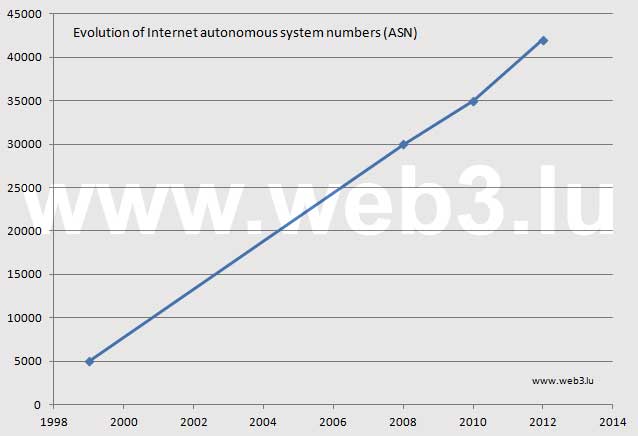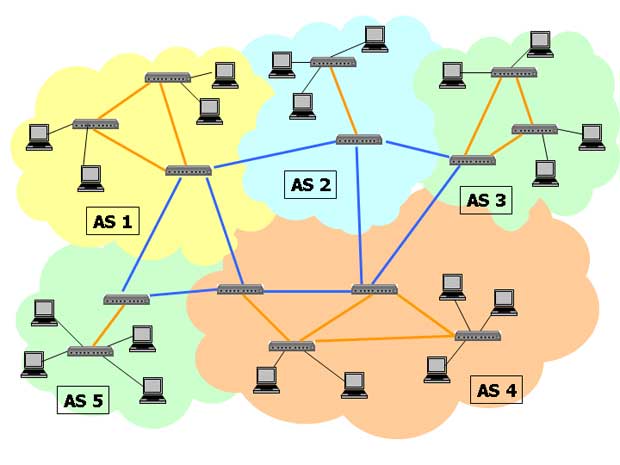The delivery of IP traffic through the Internet depends on the complex interactions between thousands of autonomous systems (AS) that exchange routing information using the Border Gateway Protocol (BGP) and present a common, clearly defined routing policy to the Internet.
Autonomous System Number‘s (ASN) are assigned in blocks by the Internet Assigned Numbers Authority (IANA) to Regional Internet Registries (RIR) which allocate them to each AS. An AS typically falls under the administrative control of a single institution, such as a university, company, or Internet Service Provider (ISP), but multiple organizations can also run BGP using the same AS numbers.
Autonomous systems are segmented in three groups :
- Multi-homed AS : has connections to more than one other AS
- Stub AS (single-homed) : is connected to only one other AS (private interconnections or peering, not reflected in public route-view servers, is however possible)
- Transit AS : provides connections through itself to other AS
The evolution of the AS numbers is shown hereafter :

Evolution of Internet autonomous system numbers (ASN)
A lookup public registry, called Routing Assets Database (RADb), or Routing Arbiter Database, designed to make fundamental information about networks available, is run by Merit Network Inc. It was developed in the early 1990s as part of the NSF-funded Routing Arbiter Project. Merit offers also a freely available, stand-alone Internet Routing Registry database server (IRRd) supporting the RPSL and RPSLng (Routing Policy Specification Language) standards.

Internet meshed autonomous systems
The topology of early networks was a simple star or tree structure. In the early Internet there was one Commercial Internet eXchange (CIX), two Federal Internet Exchanges (FIX) and four Network Access Points (NAP). Today the topology of the Internet is a huge mesh structure with millions of switches, routers, proxies, peering points and other devices which form the following network elements :
- Internet exchange point (IX or IXP) : to exchange Internet traffic between autonomous systems
- Content Delivery Network (CDN) : to serve content to end-users with high availability and high performance
- Tier-1 Network : a transit-free network that peers with every other Tier-1 network
- Tier-2 Network : a network that peers with other networks, but still purchases IP Transit to reach other portions of the Internet
- Tier-3 Network : a network that solely purchases IP Transit from other networks
The Internet backbone refers to the main data routes between core routers and large, strategically interconnected networks in the Internet, but there is no precise definition. Network security is an important topic in the Internet community. The Internet Society is actively engaged in all activities concerning routing security.
The following list provides some useful links to tools and further informations about the Internet Topology :
- The Internet Map, by Ruslan Enikeev
- Reverse Traceroute and Looking Glass Servers in the World, by CAIDA (The Cooperative Association for Internet Data Analysis)
- IPv4 and IPv6 BGP Looking Glasses at BGP4.as
- Teralink Looking Glass, by P&T Luxembourg
